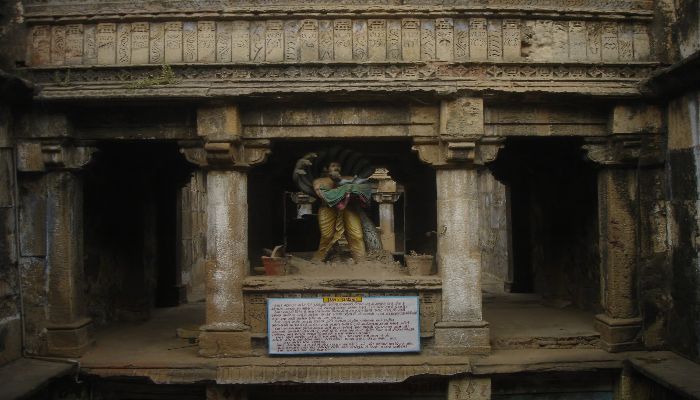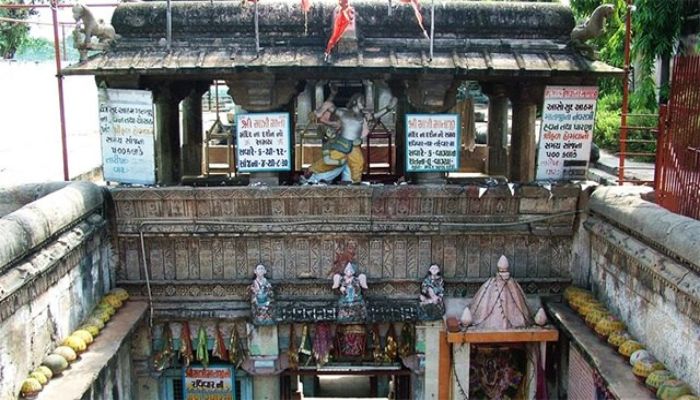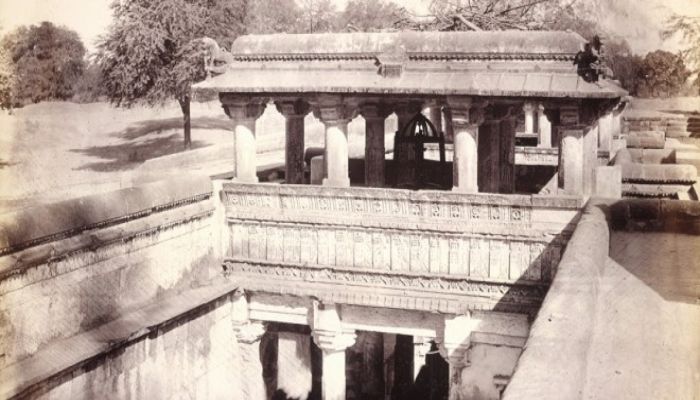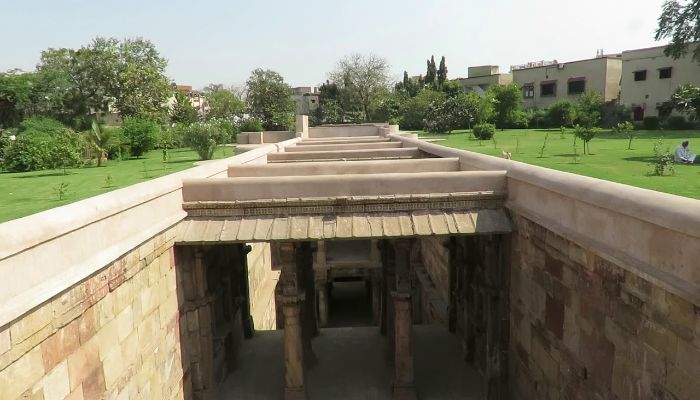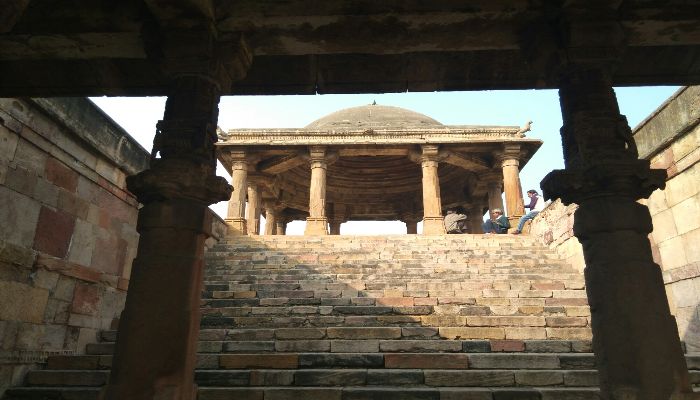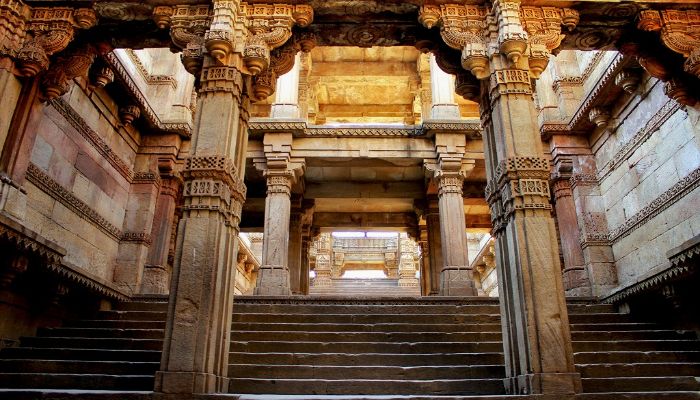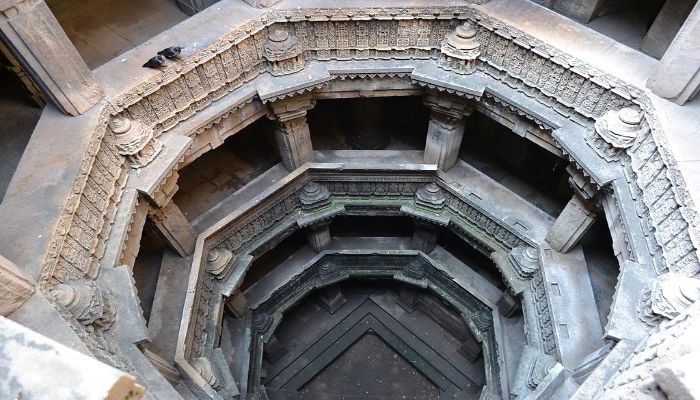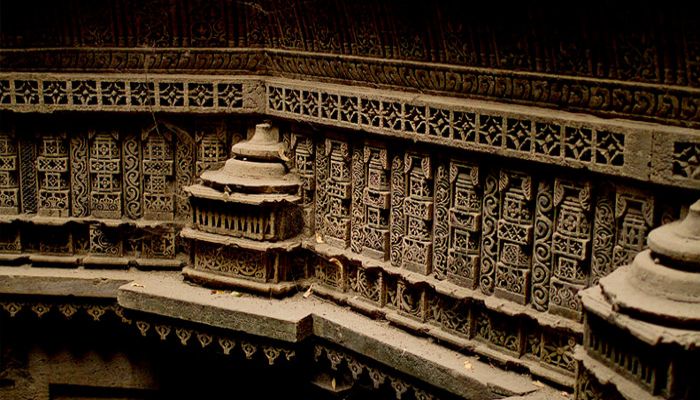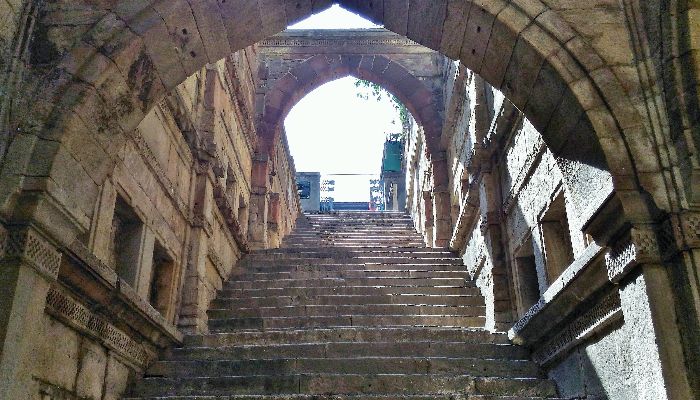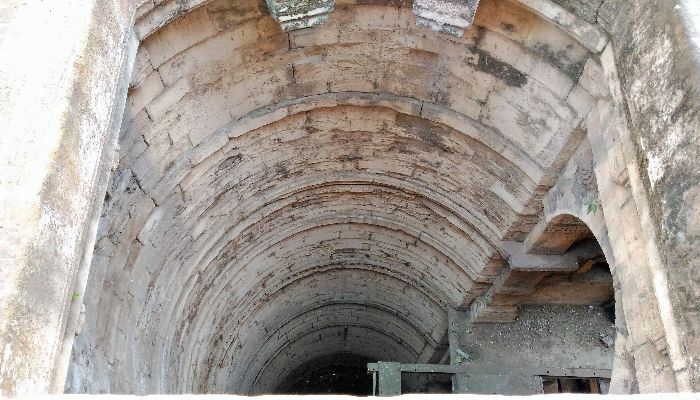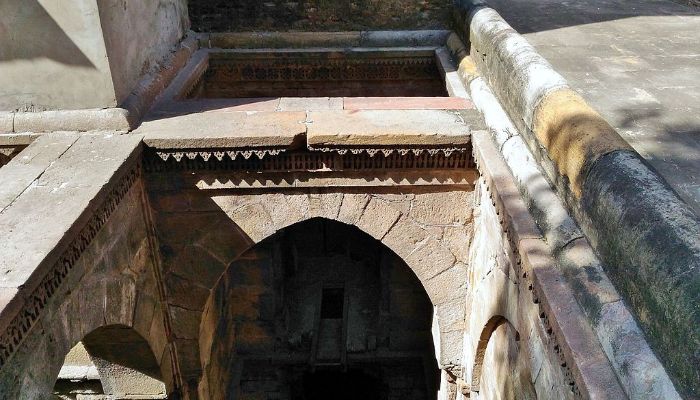Mata Bhavani’s Vav / Mata Bhavani’s Stepwell
Mata Bhavani’s Stepwell or Mata Bhavani ni Vav is a stepwell in Asarwa area of Ahmedabad, Gujarat, India.
History
The stepwell was built in 1485 by Dhai Harir, a household lady of Mahmud Begada according the persian inscription in the stepwell. She was the superintendent of the royal harem.
Dhai Harir built a mosque and a tomb in which she was buried. The well bears two inscriptions, one in Sanskrit on the south, and one in Arabic on the north wall, of the first gallery.
This holy and wholesome water; the splendid travellers’ rest-house enclosed on four sides by carved and painted walls, and a grove of fruit trees with their fruit, a well, and a pool of water for the use of man and heist, were built in the reign of the Sultan of the Sultans of the age, established by the grace of God and of the faith, Abul Fath Mahmud Shah, son of Muhammad Shah, son of Ahmed Shah, son of Muhammad Shah, son of Muzaffar Shah the Sultan, may God keep his kingdom. Dated the metropolis of the kingdom the 2nd of Jamadi-ul-awwal in the 26th year of the reign.
A Sanskrit inscription says that the step-well was built in December 1499 AD. It was during the reign of Mahmud Shah that Bai Harir Sultani, locally known as Dhai Harir, built the step-well. The name later corrupted into Dada Hari. It costed 3,29,000 Mahmudis (₹ 3 lakh) at that time. The ornate step-well has spiral staircases pieced into the sidewall of the well shaft and descending to the different platform levels.
Structure
Built in sand stone in Solanki architectural style, the Dada Harir stepwell is five stories deep. It is octagonal (8-sided polygon) in plan at the top, built on intricately carved large number of pillars. Each floor is spacious enough to provide for people to congregate. It was dug deep to access ground water at that level, accounting for seasonal fluctuations in water level due to rainfall over the year. The air and light vents in the roofs at various floors and at the landing level are in the form of large openings. From the first story level, three staircases lead to the bottom water level of the well, which is considered a unique feature.
At the level of the ground, it is 190 feet long by forty wide. At the east end, from a domed canopy, a descent of eight steps leads to a covered gallery. A second flight of nine steps leads to another gallery, and a third of eight steps to the lowest gallery two or three foot above the level of the water. At each landing a corridor runs along the sides and leads to other galleries that cross the well at intervals.
Built along a East-West axis, entrance is from the East, the two spiral staircases are in West, near the well. The structural system is typically Indian style with traditional trabeat with horizontal beams and lintels. At the bottom of the well is a square stepped floor in the shape of a funnel extending to the lowest plane. This is chiseled into a circular well. Above the square floor, columns, beams, wall and arched openings spiral around; a feature that continues to the top. The top part of the well, however, is a vertical space open to the sky. The four corners of the square are strengthened with stone beams, set at 45 degrees angle. The motifs of flowers and graphics of Islamic architecture blend very well with the symbols of Hindu and Jain gods carved at various levels of the well. The dominant carvings on the upper floors are of elephants (3 inches (76 mm) in size, each of different design). The Islamic architectural style could be attributed to Sultani Dhai Harir who built it.
Address
Mata Bhavani’s Vav, Haripura, Asarwa, Ahmedabad, Gujarat 380016
